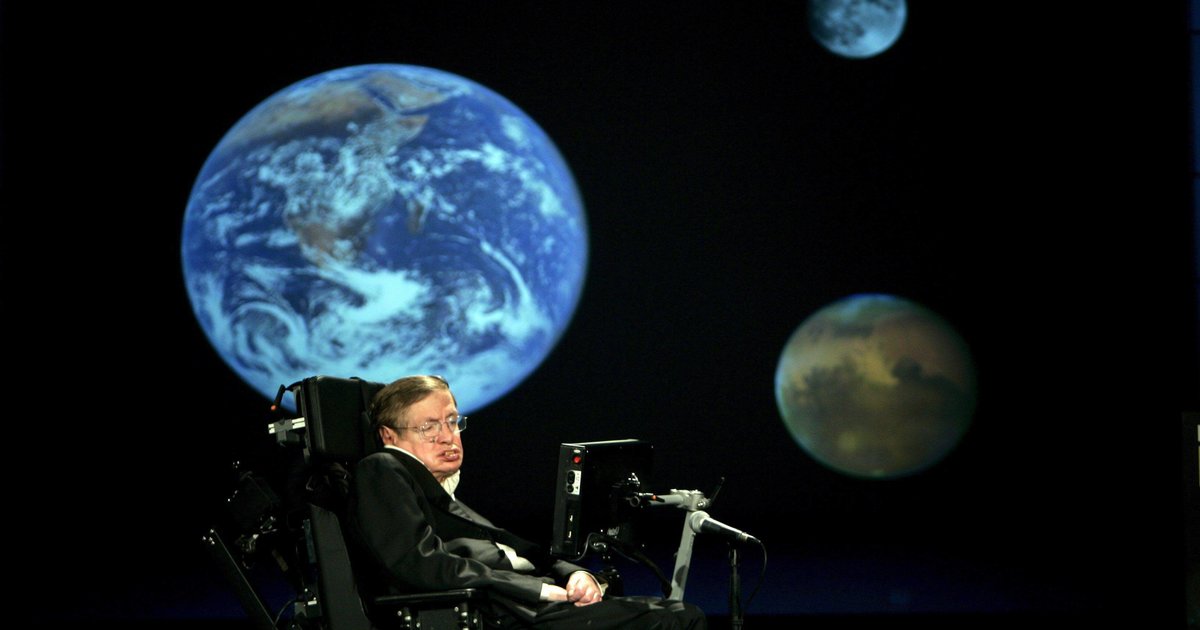
Stephen Hawking’s latest collaborator unveils the famous physicist’s definitive theory
In 1998 at the University of Cambridge, Thomas Hertog, a student, was called upon by world-famous Stephen Hawking to become one of his PhD students.
“There was a click between us,” remembers Thomas Hertog, now a professor at the Université Catholique de Louvain. This connection was never severed even though the eminent cosmologist, afflicted with Charcot’s disease, lost the use of speech.
For twenty years, the duo collaborated closely and built a new vision that upsets the way science conceives of the universe. This would be the “latest theory” of Stephen Hawking, who disappeared in 2018 at the age of 76.
Read also: Stephen Hawking, or The Unabridged History of the Genius Who Died
Thomas Hertog presents it for the first time in full in his book The origin of timereleased in spring 2023 in the UK and France.
In an interview with AFP, the author recounted his collaboration with his mentor and friend. It describes how Hawking finally felt his seminal book About the history of timehaving sold over 10 million copies, was written “from the wrong point of view”.
The Universe Responds to “Design”
When they met, Hawking immediately dealt with the question that tormented him. “The universe we observe seems to respond to design,” he tells her via his dialog, which is given by the voice of a robot. “The laws of physics turned out to be ideal for the universe to be habitable,” Thomas Hertog develops.
This remarkable chain of favorable conditions extends from the delicate equilibrium that allows atoms to form the molecules needed for chemistry, to the expansion of the universe itself, which allows the emergence of vast structures such as galaxies.
The scientist wrote: “From its violent birth, the universe appeared in a form that was amazingly adapted to the development of life – even if this did not happen until billions of years later.”
The “fashionable” answer to this conundrum is the multiverse, an idea that has recently become popular in cinema. This theory attempts to explain the seemingly made nature of the universe, making it one of a myriad of other natures, which would be “uninteresting, lifeless,” according to the 47-year-old cosmologist.
But Hawking recognized the “great morass of paradoxes into which the multiverse was dragging us”. multiverse and even About the history of time They were “attempts to describe the creation and evolution of the universe from what Stephen calls a ‘divine perspective’,” continues Thomas Hertog.
For 15 years, the two scientists have appealed to the strangeness of quantum theory to propose a new theory, from a new point of view.
“I thought it was over.”
In 2008, Hawking lost the ability to use his chat box, which led to further isolation. “I thought it was over,” says Thomas Hertog. But the duo develop a “somewhat magical” nonverbal connection, and they can get on with it.
Thomas Hertog puts himself in front of the physicist and asks him questions while looking him in the eye. Hawking had a very wide range of facial expressions, ranging from extreme disagreement to extreme excitement. And this connection, he says, is “indistinguishable” between ideas emanating from him or from Hawking.
Their theory focuses on what happened in the first moments after the Big Bang. Rather than the subsequent explosion of a pre-existing set of rules, they suggest that the laws of physics themselves evolved along with the universe.
So if we go back far in time, “the laws of physics start to simplify and disappear,” explains Thomas Hertog. In the end, even the time dimension evaporates.
The laws of physics and time would have evolved in a manner similar to biological evolution – the title of his work refers to Darwin On the origin of species.
“Biology and physics are two levels of a great evolutionary process.” However, this theory is difficult to prove because the early years of the universe remain “hidden in the haze of the Big Bang”.

“Organizer. Social media geek. General communicator. Bacon scholar. Proud pop culture trailblazer.”
